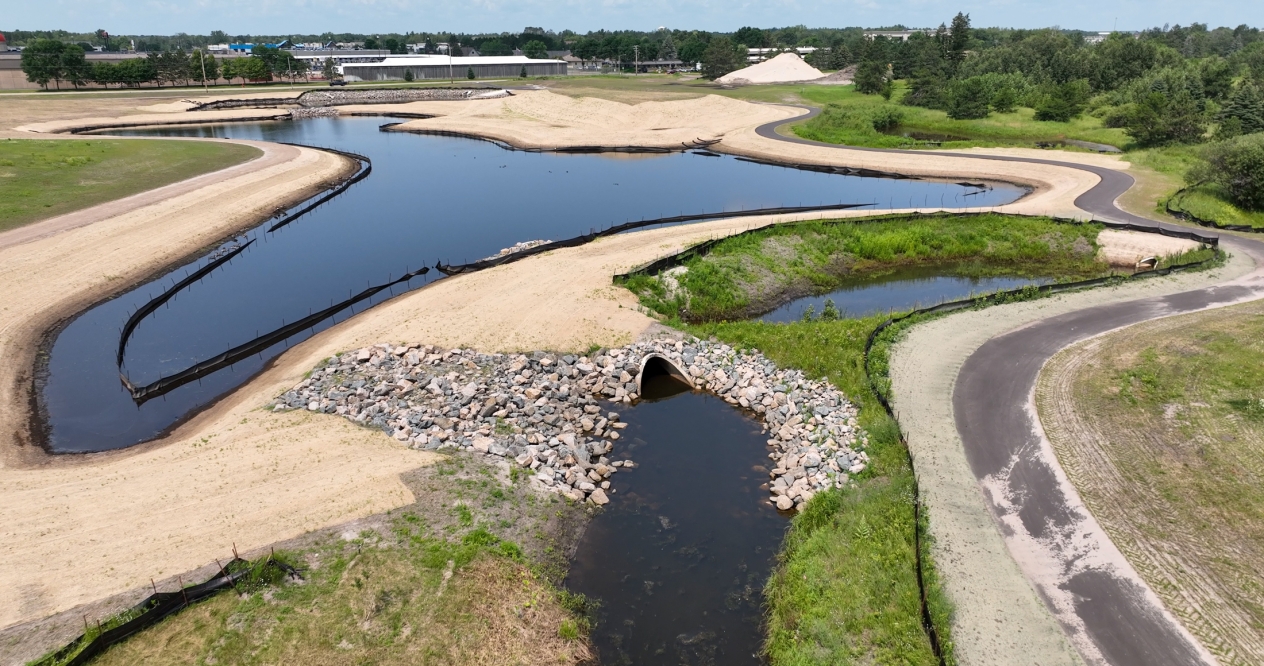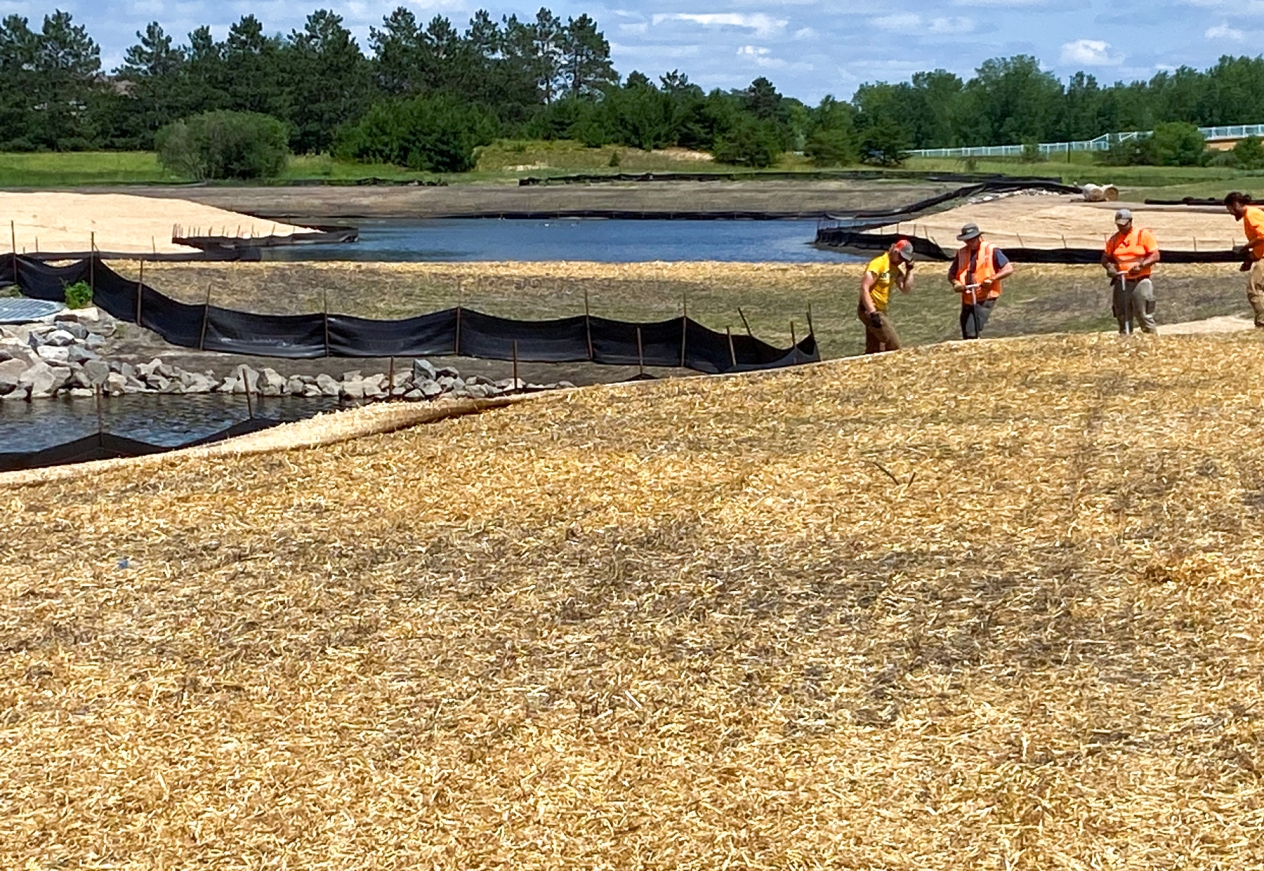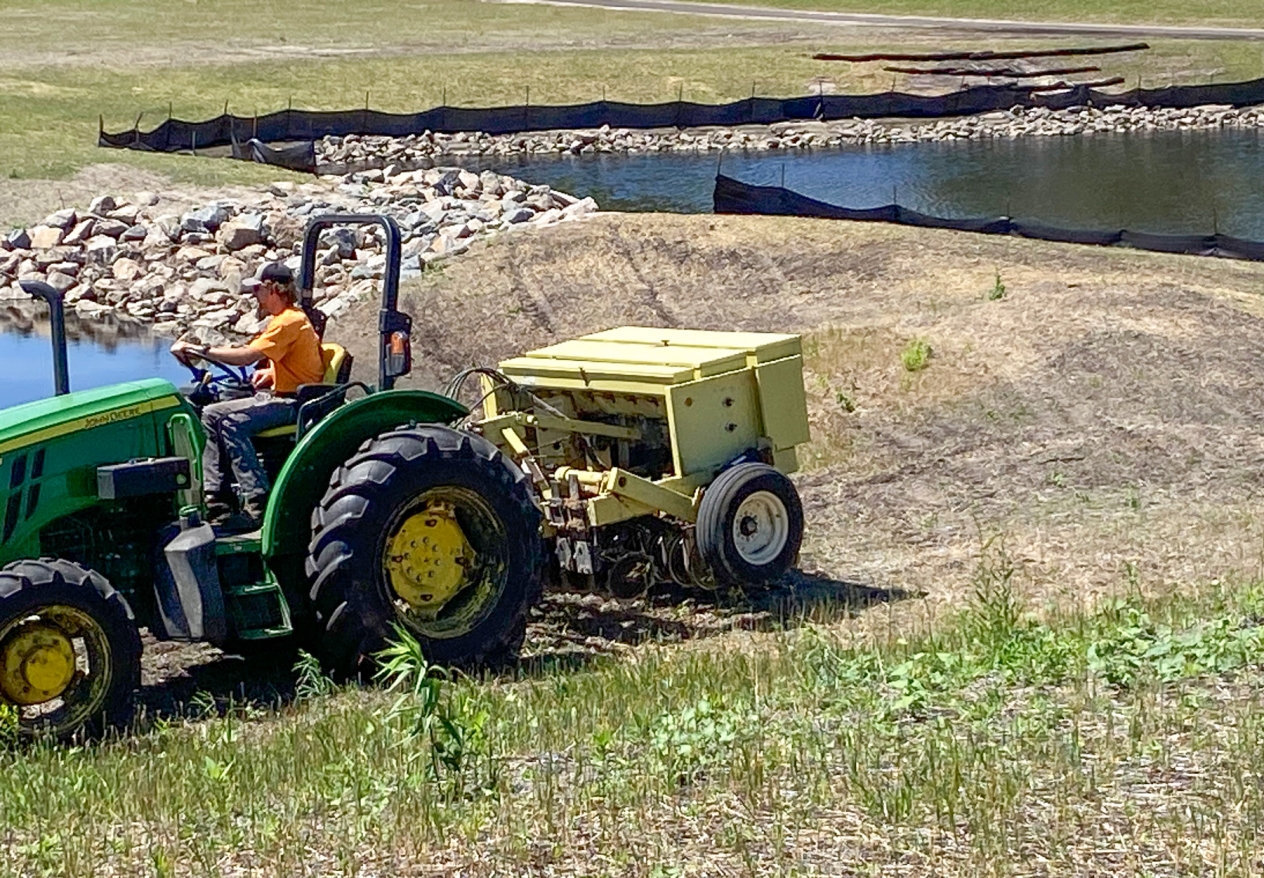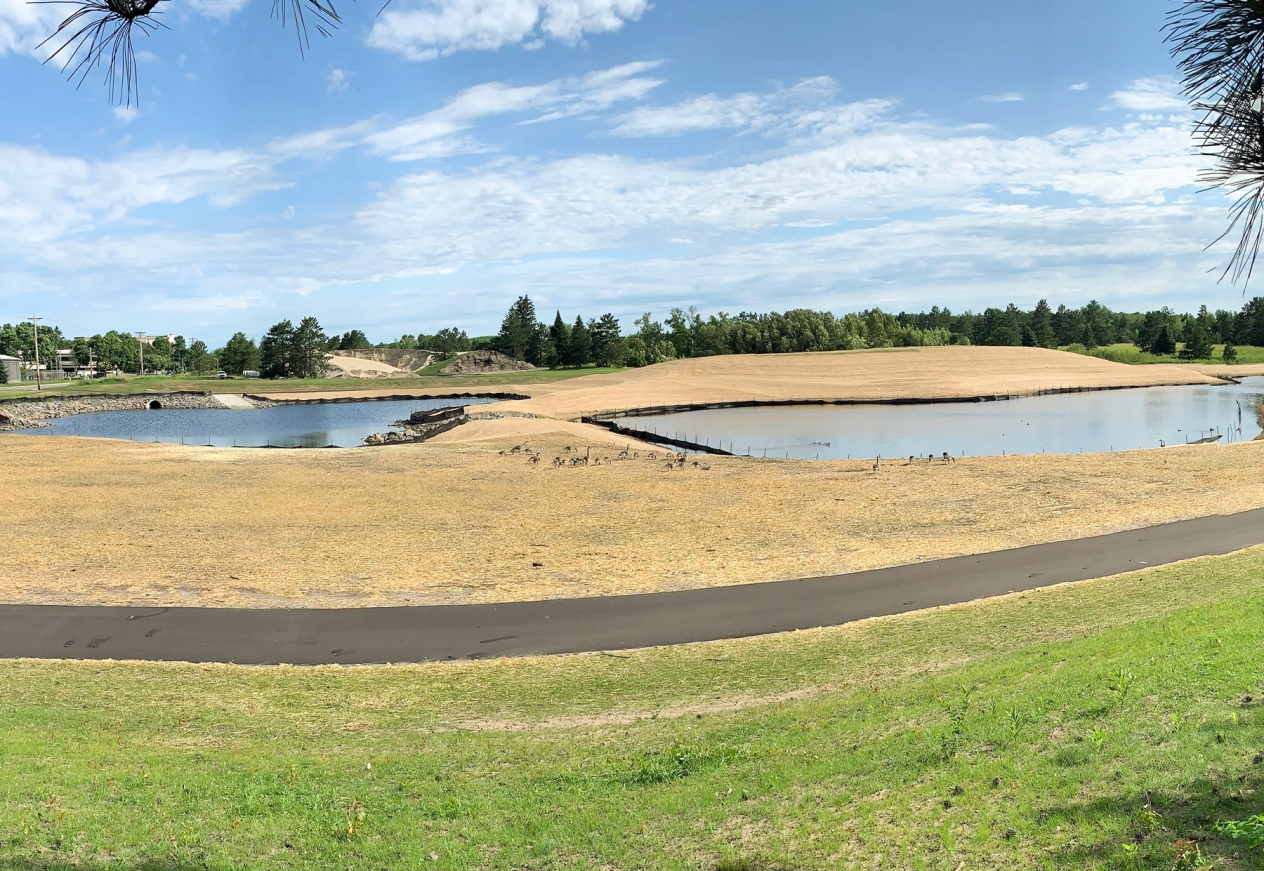
MPCA awards Good Samaritan Society for cleaning up mercury-polluted soil
The discovery of mercury contamination on part of the former Pine Meadows Golf Course in Baxter left the land's new owners with a dilemma: The Evangelical Lutheran Good Samaritan Society could choose to do nothing with those 13 acres and let somebody else deal with the pollution. Or the organization could shoulder the $300,000 cleanup cost and turn the land into an asset for the community.
The society took on the cleanup challenge, resulting in a newly completed $2.6 million stormwater wetland that will reduce the runoff of pollutants into the Mississippi River. The project also led the MPCA to recognize the society with its Community Conservationist Award.
“This is huge,” says Glenn Skuta, director of the MPCA’s Watershed Division. “Good Samaritan could have just walked away from the project, but they continued on for the good of the river.”
A story about a town
With 30 miles of hiking trails, eight parks, and the 400-acre Northland Arboretum prairie restoration project, Baxter has preserved a rural nature inside its city limits.
“We’re an outdoor, nature city,” says Trevor Walter, Baxter public works director and engineer. “We are not curb-and-gutter streets.”
But Baxter officials still recognized a need to address stormwater. Along Highway 371, about 400 acres of commercial parking lots created mostly impervious surfaces where rainwater would drain into Whiskey Creek and the Mississippi, carrying with it nutrients that could cause eutrophication, or oxygen depletion. This can suffocate fish and disrupt entire ecosystems. It turned out that the area was the second-largest source of nutrients and sediment heading into the upper portion of the Mississippi River: About 60,000 pounds of sediment and 142 pounds of phosphorus entered the Mississippi from the area every year.
“This project isn’t just for the City of Baxter,” says Baxter administrator Brad Chapulis. “It’s the region; it’s the state, for all the people who utilize and cherish the Mississippi River.”
A decade-long story
Good Samaritan bought the abandoned 80-acre golf course in 2013 with the intention to build senior housing. The same year, the City of Baxter identified 13 acres of the golf course as an ideal stormwater treatment site where artificial wetland ponds could help clean the environment by slowing down running water and giving sediment in that water a chance to settle. Vegetation in and around the ponds could absorb pollutants, particularly nutrients, such as nitrates and phosphates. The long roots of native plants could create channels that let water sink into the soil.

In 2020, Good Samaritan appeared poised to sell that portion of the golf course to Baxter for the stormwater wetland project. This is where things could have gone wrong. During the due diligence investigation for the purchase, Baxter officials discovered the land contained mercury contamination, something missed when Good Samaritan bought it. The mercury was a leftover fungicide from outdated methods of golf-course management, applied to the golf course’s greens and tee boxes.
Mercury does not break down in the environment. The health effects from being exposed to mercury include damage to the nervous system and kidneys. It can be spread through the air, and when it collects in water, it builds up in fish, posing a risk to people who eat it.
Fixing it wouldn’t be cheap.
“Our initial reaction was, ‘This is expensive!’” says Joel Fluit, Good Samaritan CFO. “Based off the purchase price, what the City was willing to pay, it would cost us more to remediate than what you get from selling the land.”
The requirements for stormwater wetlands are steep. The group could have continued with other construction plans that would have allowed for cheaper remediation methods. And because the mercury had been applied under the regulation of the Department of Agriculture, the site wasn’t eligible for assistance from the MPCA Brownfield Program. Nevertheless, Good Samaritan moved ahead with the sale and had almost 3,000 cubic yards of contaminated soil removed. That’s enough to fill 300 dump trucks.
“Good Samaritan spent their own money and persevered through a complicated process to help make this very important regional stormwater project a reality,” Skuta says. “They are a perfect example of working toward the common good, even at their own expense.”
The City worked with the MPCA to get a permit to move the contaminated soil to the Vonco II Waste Campus in Becker, Minnesota. The Mississippi Headwaters Board secured $150,000 in private funds to help with the cost.

“There were so many times in this project that it could have just ended,” says Mississippi Headwaters Board Executive Director Tim Terrill. “It was Good Samaritan that saw the community good. It wasn’t a money-making venture for them.”
Once the mercury was removed, the City of Baxter paid $479,000 for the land. Since then, the city has raised hills on the flat area to create the slope needed to direct water to the ponds and planted three acres of native prairie grasses, with aquatic plants coming next.
A much bigger story
The wetlands project in Baxter improves conditions for what has become a nationwide issue. The hypoxic area, commonly called the “dead zone,” in the Gulf of Mexico is about 5,827 square miles, roughly the size of Connecticut. Oxygen levels in the region are low enough to kill fish and other marine life, according to the National Oceanic and Atmospheric Administration. The Mississippi River watershed covers 22 states and more than 40% of the continental United States. When small communities like Baxter do their part, it makes an impact on the larger stage.
Baxter officials had practical matters in mind, too, as they pursued the project. They knew additional limits were coming for their stormwater discharge. It’s a need that isn’t going away. The Whiskey Creek project was an opportunity for entities to work together and seek grant money, a benefit to the city’s stormwater system. Baxter ended up paying only about one-fourth of the overall cost.
“From an environmental standpoint, how much total suspended solids and phosphorous we could remove just from those 400 acres was very significant,” Chapulis says. “We’re playing a role to preserve the integrity of the Mississippi River.”
A story to be continued
The site will include paved walking trails for the public and will connect to the city trail, which connects to the Paul Bunyan State Trail, a 115-mile route that runs from Crow Wing State Park to Lake Bemidji State Park, the longest of Minnesota’s state trails.
“We’ve tried to preserve the northern woods appeal that everyone looks at our area as quality of life,” Chapulis says.

Baxter officials hope to add a kiosk with information about the site development and how it works. Good Samaritan might be a part of that story.
“Without them and their willingness to do so, this project never would have come to fruition,” Walter says. “We are very appreciative that Good Samaritan stepped up to the plate and sold us the land. They did it for the environment, not just the City of Baxter, to leave this world a better place.”
The MPCA’s Community Conservationist Award, which recognizes outstanding accomplishments in implementing conservation practices in a community environment, was presented to Good Samaritan in December at the Minnesota Association of Soil and Water Conservation Districts convention.
The Whiskey Creek stormwater project was a collaboration of multiple agencies, including the MPCA, Minnesota Board of Water and Soil Resources, Minnesota Department of Agriculture, Enbridge, Environment and Natural Resources Trust Fund (money from the state lottery), Clean Water Land and Legacy Amendment, Clean Water Fund, Crow Wing Soil and Water Conservation District, Mississippi Headwaters Board, Minnesota Department of Natural Resources, Cities of Baxter and Brainerd, HR Green, and University of Minnesota Extension.
Good Samaritan still owns many acres at the site contaminated with mercury. There are several remediation options available, depending on what the land will be used for. It will cost millions of dollars to fix, Fluit says.
“We continued to invest rather than, say, ‘You know what? This doesn’t work; let’s walk away,’” he says. “Seeing the project, what the City was trying to do, is for the greater good, not just for Baxter, but the whole Mississippi River.”
